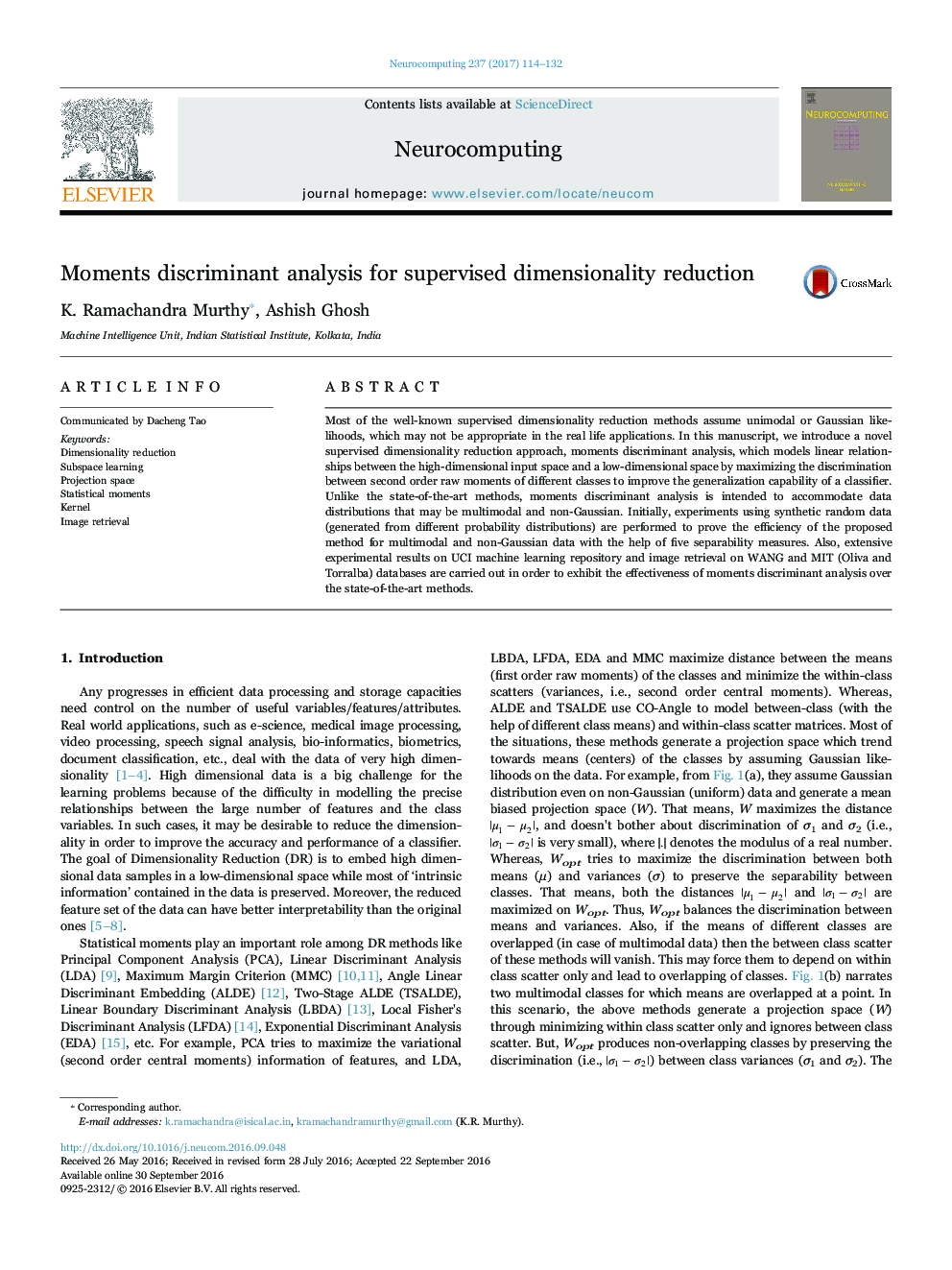| Article ID | Journal | Published Year | Pages | File Type |
|---|---|---|---|---|
| 4947756 | Neurocomputing | 2017 | 19 Pages |
Abstract
Most of the well-known supervised dimensionality reduction methods assume unimodal or Gaussian likelihoods, which may not be appropriate in the real life applications. In this manuscript, we introduce a novel supervised dimensionality reduction approach, moments discriminant analysis, which models linear relationships between the high-dimensional input space and a low-dimensional space by maximizing the discrimination between second order raw moments of different classes to improve the generalization capability of a classifier. Unlike the state-of-the-art methods, moments discriminant analysis is intended to accommodate data distributions that may be multimodal and non-Gaussian. Initially, experiments using synthetic random data (generated from different probability distributions) are performed to prove the efficiency of the proposed method for multimodal and non-Gaussian data with the help of five separability measures. Also, extensive experimental results on UCI machine learning repository and image retrieval on WANG and MIT (Oliva and Torralba) databases are carried out in order to exhibit the effectiveness of moments discriminant analysis over the state-of-the-art methods.
Related Topics
Physical Sciences and Engineering
Computer Science
Artificial Intelligence
Authors
K. Ramachandra Murthy, Ashish Ghosh,
